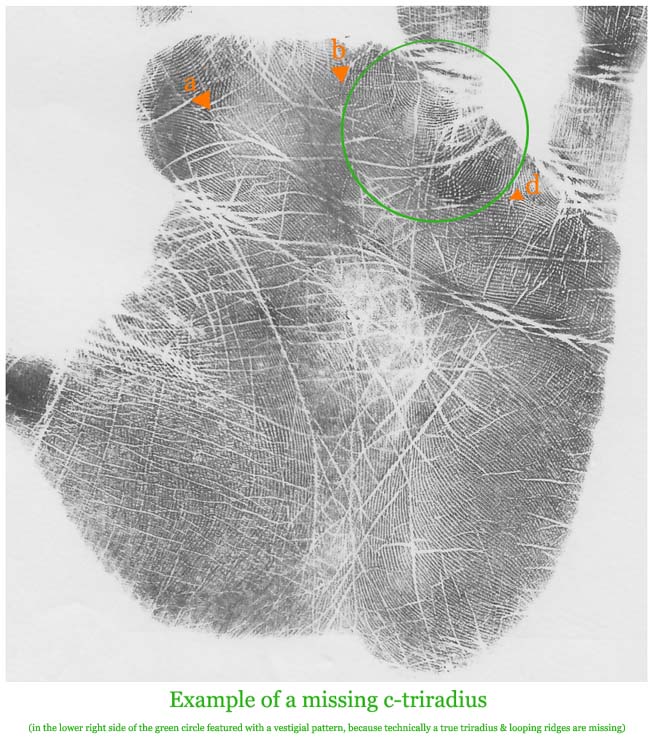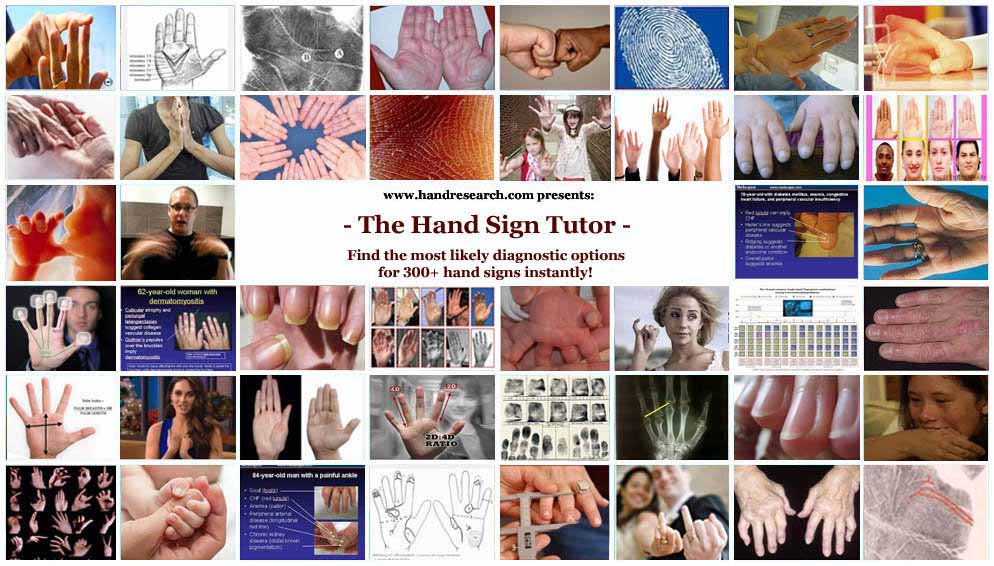Most likely diagnostic options for a missing c triradius - this involves the region of the palmar zone below the ring finger, where palmar triradii are most often missing (ranked by 'weight' for the general population):
- ASSOCIATED PSYCHOLOGICAL CONDITIONS:
• high Neuroticism (N+) [~9% | 1:4 | weight: 0,41]
• low Extraversion (E-) [~8% | 1:4 | weight: 0,36]
- ASSOCIATED MEDICAL CONDITIONS:
• diabetes mellitus type 2 [~10% | 1:12 | weight: 0,15]
• left hand: trisomy 21 (= Down syndrome) [~10% | 1:700 | weight: 0,002]
• trisomy 18 (= Edwards syndrome) [~30% | 1:6K | weight: 0,001]
• fragile-X syndrome [~11% | 1:5K | weight: 0,0004]
• arthrogryposis [~20% | 1:10K | weight: 0,0004]
• Kabuki syndrome [~48% | 1:32K | weight: 0,0003]
[1st figure = prevalence hand sign in condition | 2nd
figure = prevalence condition in GP | 3rd figure =
estimated hand sign weight for condition relative
to GP (>0,5 = present in majority of GP)]
|

Quick summary:
absence of c-triradius is present in only a considerable minorty of high scorers for the Big Five personality dimension Neuroticism.
[In every 100 absent c-triradius cases in the general population (GP) you can expect to find about
41 high Neuroticism cases, 36 low Extraversion cases, etc.]
|

